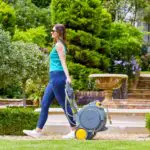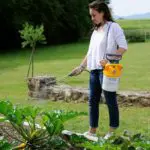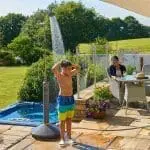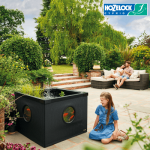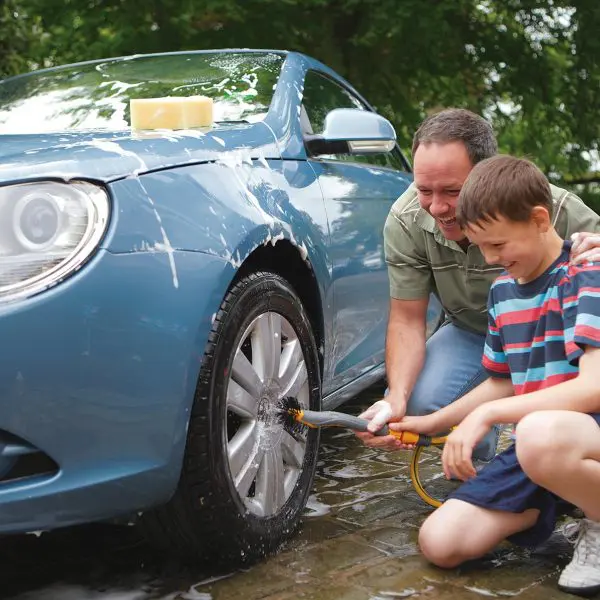Bees are a lot more diverse than you may realise. Along with the wonderful honeybee that we have to thank for our pots of honey, beeswax and propolis, our gardens also support a wide range of bumblebees and a huge variety of what are known as solitary bees. These are the wild bees that you might not be as familiar with and there are about 275 different species that all need our support too.
Fortunately everything we do, grow and plant to support bees also helps most pollinators too.
Bee-friendly plants for pots
If you only have a pot or two to plant up for the bees then you need to choose the best plants. It’s really important to have plants in flower all year round and to grow a variety of different flower types to cater for bees with different tongue lengths. If you really want to plant a great pot for bees, then here some great ideas to get you started. These plants will not only bee good for the bees, but will also add a splash of colour to your garden too and some of them have culinary uses too.
Bee-friendly plants for small pots
If you are short on space you can still plant a small pot, or a window box with great effect. Bulbs are a great place to start with little pots, especially as many are spring flowering. They start to flower when the bumblebees and solitary bees are first emerging from their winter slumber in February and March. They are normally planted in autumn. But if you haven’t already planted bulbs you can usually buy pots of flowering bulbs from your local nursery.
Keep some outside and place a pot or two in a cool greenhouse to force them into flower a bit earlier. By staggering the flowering period you offer more forage for bees at a time when there is little in flower and the bees need all the help they can get.
The really great thing about bulbs is that they will bulk up and flower better year after year. Here are a handful that are great for bees:
- Snowdrops are a beautiful midwinter flowering bulb offering pollen and nectar to winter active bees and early emergers. Choose single flowered varieties for the best results.
- Crocuses are a magnet for early emerging queen bumblebees that feed on their nectar and pollen. Plant them in shallow bowls or small pots and place together for drama and to reduce the flying time for your bees.
- Grape hyacinths (muscari) are a great choice for small pots and pollinators. They have masses of tiny flowers in one place full of nectar and pollen.

Crocus
Bee-friendly plants for medium pots
If you want to grow plants for bees and have room for some medium sized pots, (about the size of a bucket) then grow perennials and choose plants that help plug the food gaps of spring and late summer when there are less plants available for the bees.
Be sure to choose those with open access flowers, where the pollen and nectar are accessible.
Perennials especially early flowering types are extremely important for bees. Here are a few of the best.
- Lungwort (pulmonaria), which is a great plant for the Hairy Footed Flower bee.
- Research from the University of Bristol showed that one hellebore flower has as much nectar as 157 snowdrops, so hellebores are a fantastic bee plant.
- Early flowering mountain cornflowers are another great spring flowering perennial for bees.
- As summer progresses good bee plants for larger pots include salvias of all types, catmint, verbena and the amazing hardy geranium ‘Rozanne’.
- Later summer bee plants include asters, rudbeckias and echinaceas and if you have garden space these are all great plants for pollinators.

Hellebore

Marjoram
How to use bee-friendly herbs
Herbs are brilliant plants to grow in pots and have the added benefit of being so useful in the kitchen and when allowed to flower, herbs are great for bees too. Borage is particularly good because the flowers replenish their nectaries regularly. Mint is best grown in pots because it spreads thuggishly, and yet its leaves make fantastic tea and its flowers attract pollinators.
- Thyme is a great bee plant; research has shown that bumblebees may feed on its nectar for medicinal reasons. Wild marjoram is an exceptional flower for pollinators, rich in nectar.
- Rosemary can flower in late winter and its nectar rich flowers are popular with bees.
Bee-friendly plants for large pots and planters
If you’ve got room for bigger pots choose flowering shrubs, these plants often have hundreds of flowers in one place. One of the best spring shrubs for bees is the flowering currant. It has masses of nectar rich flowers that are a lifesaver for the early queen bees on the wing. With the flowers all in one place the bees can save energy and get food fast from one plant.
If you can marry your container with a trellis, obelisk or even just some training wires on an adjoining wall then choose early flowering clematis like Clematis alpina which attract bumblebees, or choose honeysuckle, which is good for many pollinators.
You can grow plants that feed the bees and offer a fruit reward to you in larger pots, choose raspberries or blueberries, both have nectar rich flowers and offer a crop of juicy, delicious fruit for your morning cereal, jams and fruit laden cakes and puddings.

Echinacea
Photo credits: Martin Mulchinock and Jean Vernon

About the Author
Jean Vernon is on a quest to inform and advise about the bees in your garden, their huge diversity and their complicated needs. Her first book The Secret Lives of Garden Bees was published 2020 by White Owl Books. More bee info on her website: www.addictedtobees.com



